Companion Medical INPEN REUSABLE PEN INJECTOR User Manual
Companion Medical, Inc. REUSABLE PEN INJECTOR Users Manual
Users Manual
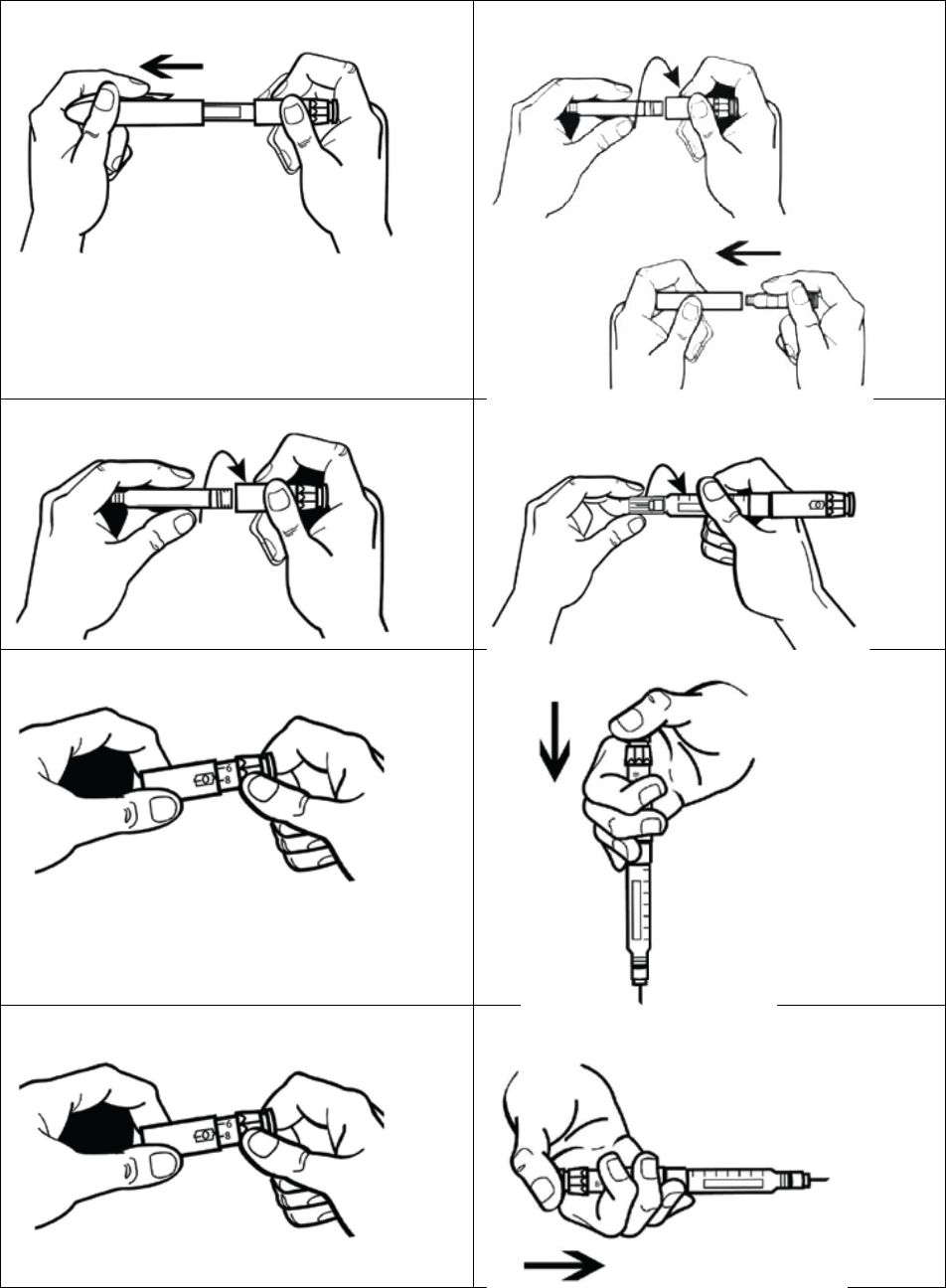
Companion InPen™ Quick Start Guide
1. Pull to remove the cap from the InPen.
2. Unscrew the cartridge holder and insert the
cartridge.
3. Attach the cartridge holder.
4. Remove the paper tab and/or plastic cover
and attach the needle to the InPen.
5. Rotate the knob to set 2 units to prime the
InPen.
6. Press down on the button to prime the InPen.
7.
Rotate the knob to set the desired therapy
dose.
8.
Insert the needle into the skin and press down
on the button to inject.
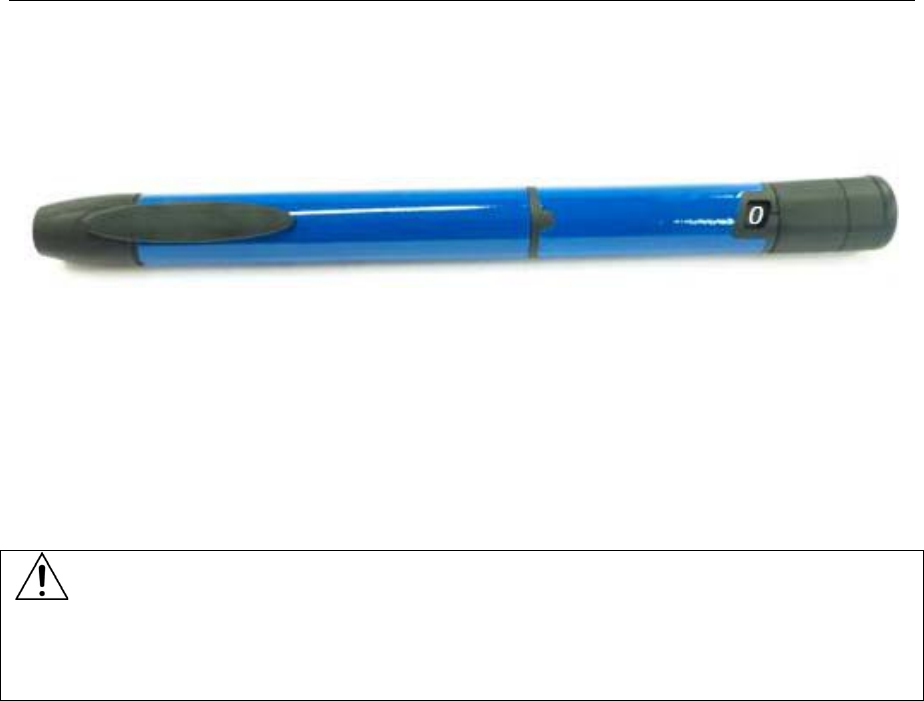
Page 2 of 13
InPen™ User manual
1 Introduction
Thank you for choosing InPen, the insulin pen designed to help make your insulin treatment easier.
This manual will tell you how to use and handle your InPen. Read it carefully before you use your
InPen.
InPen is easy to use. It delivers doses from 0.5 (½) to 30 units of insulin. You can dial your dose one
half (½) unit at a time. If you dial too many units, you can correct the dose without wasting any
insulin.
InPen connects to an optional mobile device application - the InPen Diabetes Manager Application -
via Bluetooth®. The InPen transmits dose information so that the application (“app”) can help you
remember the number of units you received from your last injection, when the injection was taken,
and other helpful information.
InPen is designed to be used with 3 mL insulin cartridges, and compatible disposable needles.
You should read this manual before use – even if you have used the InPen before. Failure to
follow the instructions may result in too much or too little insulin being delivered.
DO NOT SHARE YOUR INPEN OR NEEDLES AS INFECTION OR DISEASE CAN BE SPREAD FROM ONE
PERSON TO ANOTHER.
If any of the parts of your InPen appear broken or damaged, DO NOT USE. Contact your healthcare
provider for a replacement.
InPen is not recommended for the blind or visually impaired without the assistance of a sighted
individual trained to use it. Always carry a spare insulin delivery device in case your InPen is lost or
damaged.
The CE mark on a medical device indicates that the product conforms to the provisions in the EC
Directive for Medical Devices 93/42/EEC.
InPen fulfils the functional requirements and specification limits for dose accuracy according to ISO
11608-1 Pen-Injectors for Medical use, Part 1: Requirements and test methods.
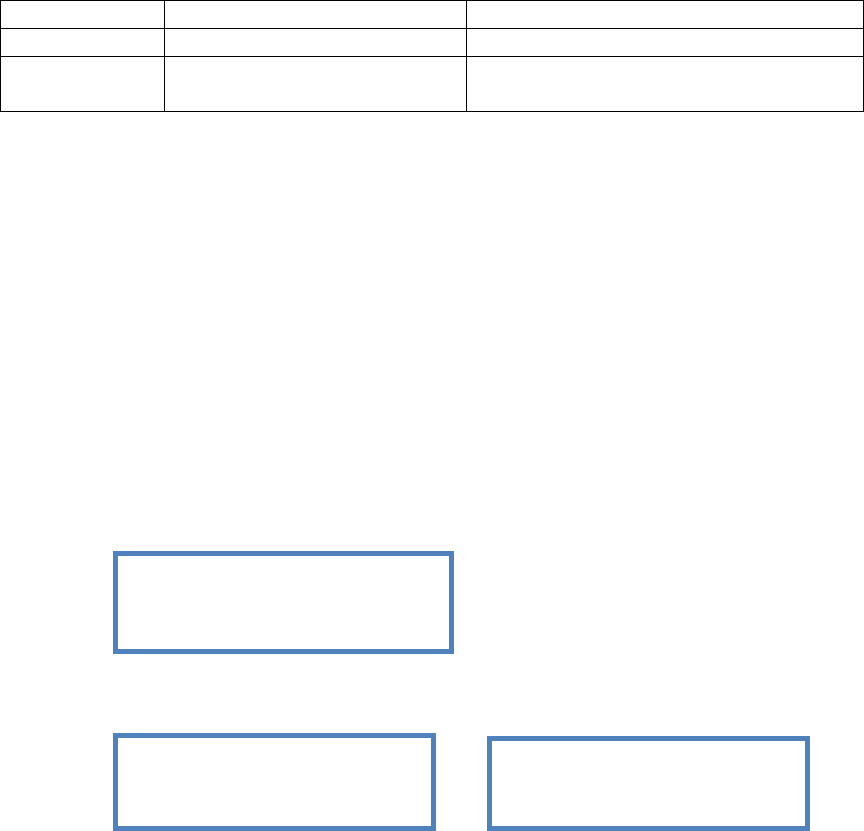
Page 3 of 13
2 Compatible Insulin and Needles
InPen is compatible with 3 mL (300 unit) insulin cartridges and disposable needles (supplied
separately). Refer to the table below to determine compatible insulin and needles for use with your
InPen:
InPen Model
Compatible Insulin Cartridges
Compatible Needles
InPen-100EL
Lilly Humalog® 3 mL
BD Micro-Fine™, Ultra-Fine™, Nano™
InPen-100NV
Novo Nordisk Penfill® 3 mL
Novo Nordisk NovoFine®
BD Micro-Fine™, Ultra-Fine™, Nano™
3 Getting Ready
Wash your hands and make sure you have the following items available before beginning:
• InPen
• 3 mL Insulin Cartridge
• New Pen Needle
• Alcohol Swab
4 Preparing your InPen
4.1 Steps
1. Pull Off Cap
2. Unscrew and Remove Cartridge Holder. If an insulin cartridge was previously
installed, remove and dispose of it now.
3. The Screw will be out when you get the InPen. Hold the Dose Knob and turn the
Screw clockwise to screw it back into the InPen Body until it stops.
4. Before inserting, be sure to inspect your Insulin Cartridge per the manufacturer’s
instructions, including checking for:
• Correct Type
• Expiration date
• Visual appearance (if cloudy, manufacturer may state how to re-suspend the
insulin)
• Cracks, breaks, or other damage
5. Wipe the small Rubber Seal on the end of the Cartridge with an alcohol swab.
6. Insert the small end of the Insulin Cartridge into the Cartridge Holder.
Image showing fully retracted
screw
Image showing how to retract
screw
Image showing unscrewing of
cartridge holder
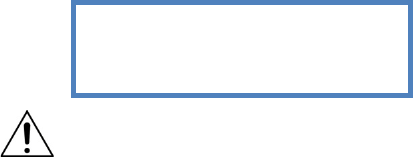
Page 4 of 13
7. Attach Cartridge Holder by pushing the Cartridge Holder and InPen Body straight
together. Screw the InPen Body onto the Cartridge Holder until it is secure.
Caution: If the Cartridge Holder is not securely attached, the cartridge may be
misaligned and you may not get your full dose.
4.2 Important Notes
• Your healthcare provider has prescribed the type of insulin best for you. Any changes in
insulin should be made only under medical supervision.
• InPen is for use only with 3 mL Insulin Cartridges.
• Only use Insulin Cartridges compatible with your InPen.
• Read and follow the instructions provided in your Insulin Cartridge Patient Information.
• Before each injection, read the Cartridge Label and be sure the InPen contains the
correct Insulin Cartridge.
• The color of the InPen is not intended to indicate insulin type.
• The numbers on the Cartridge Holder give an estimate of the amount of insulin
remaining in the Cartridge. Do not use these numbers for measuring an insulin dose.
• For more information on InPen and insulin, please refer to the Patient Information
provided with your Insulin Cartridge or contact your healthcare provider.
4.3 Frequently Asked Questions about Preparing your InPen
1. What should I do if I can’t attach the Cartridge Holder to the InPen Body?
Check that the Insulin Cartridge is fully inserted into the Cartridge Holder and the Screw is
screwed all the way back inside the InPen. Then carefully line up the Cartridge Holder
with the InPen Body and screw together until secure.
2. Why do I pull the InPen apart when I try to remove the InPen cap?
Twisting the InPen Cap may have unscrewed the Cartridge Holder.
• Remove the cartridge holder and Insulin cartridge from the InPen cap.
• Place the Insulin cartridge into the Cartridge Holder and screw it back onto the InPen
assembly.
• Be sure to prime the InPen again before the next use.
5 Prime your InPen (Before Every Injection)
5.1 Steps
Caution: If you do NOT prime, you may not receive too much or too little insulin.
1. Remove Paper Tab from Needle
Image showing assembled pen
with new cartridge
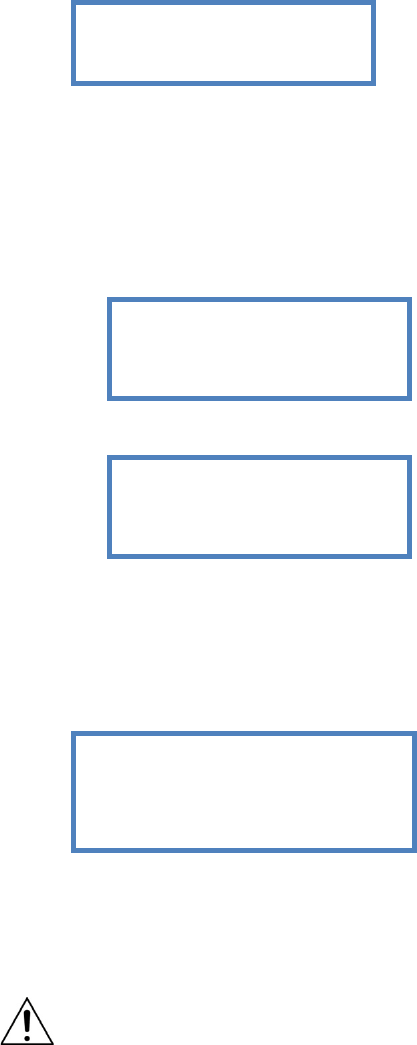
Page 5 of 13
2. Attach Needle by screwing Needle straight onto the Cartridge Holder.
3. Pull off the Outer Cap and the Inner Cap.
• Discard the Inner Cap.
• Keep the Outer Cap to remove the Needle after your injection.
4. Turn the Dose Knob to select amount to prime:
• If using a new Insulin cartridge, set to 4 units.
• If using an Insulin cartridge already in use, set to 1 unit.
5. Hold the InPen so the needle is pointing up and tap Cartridge to collect any air at the
top for removal.
6. Prime the InPen by pushing the Injection Button and holding for five (5) seconds. You
should see a stream of insulin. The InPen is NOT properly primed if you only see a
few drops of insulin.
7. If no stream is seen, repeat priming according to steps 4 through 6. A new Cartridge
may need to be primed several times to get a stream of insulin.
Caution: If no insulin flows after several attempts, attach a new Needle, as the one
on your InPen may be clogged.
5.2 Important Notes
• Only use Needles compatible with your InPen.
• The directions regarding needle handling are not intended to replace local, healthcare
provider, or institutional policies.
• Use a new Needle for each injection. This will help ensure sterility. It will also help
prevent leakage of insulin, keep out air bubbles, and reduce Needle clogs.
Picture showing correct priming:
Pointed up, user pressing button,
stream of insulin
Picture of dial set to 1 units
Picture of dial set to 4 unit
Image showing needle being
attached
Page 6 of 13
5.3 Frequently Asked Questions about Priming Your InPen
1. Why is it important to prime before every injection?
If you do NOT prime, you may get too much or too little insulin. Priming helps to ensure
that the InPen and Needle are working properly. Once the InPen is properly primed, a
stream of insulin will flow from the Needle. You may need to prime several times before
you see a stream of insulin.
2. Why can it take several attempts to prime when a new Cartridge is inserted?
There may be a gap between the Screw and the Cartridge Plunger. Repeating the priming
steps will move the Screw out to touch the Cartridge Plunger. Once touching, insulin will
flow from the Needle when priming.
• Repeat the priming steps until a stream of insulin is seen.
• If you are still unable to see a stream of insulin flow from the Needle, go to Question
3.
3. Why should I prime to a stream, and why isn’t the InPen ready for use if I see a drop of
insulin on the Needle tip?
Priming moves the Screw into contact with the Cartridge Plunger and gets the air out of
the Cartridge. When you are priming the InPen:
• You may see a drop of insulin on the tip of the Needle when you first attach it. This
only shows that the Needle is attached and not clogged. You must still prime the
InPen.
• You may also see no flow at all. This may be because the Screw is moving forward to
close a gap between the Screw and the Cartridge Plunger.
• If there is air in the Cartridge, the insulin may sputter or drip until all the air is
removed.
• Insulin will flow as a stream only when the InPen is properly primed.
• If the Injection Button is hard to push, the Needle may be clogged. Attach a new
Needle. Repeat the priming steps until a stream of insulin is seen.
If you are still unable to see a stream of insulin out of the Needle, do NOT use the InPen.
Contact your healthcare provider for assistance or to obtain a replacement.
4. What should I do if I have an air bubble in the Cartridge?
Priming your InPen will remove air. Hold the InPen so that the Needle is pointing up, and
tap the Cartridge gently with your finger so any air bubbles can collect near the top.
Repeat the priming steps until a stream of insulin is seen. A small air bubble may remain
in the Cartridge after completion of the priming steps. If you have properly primed the
InPen, this small air bubble will not affect your insulin dose.
5. Why does no drop of insulin appear at the needle tip when I check the insulin flow?
The needle may be blocked.
• Screw on a new needle
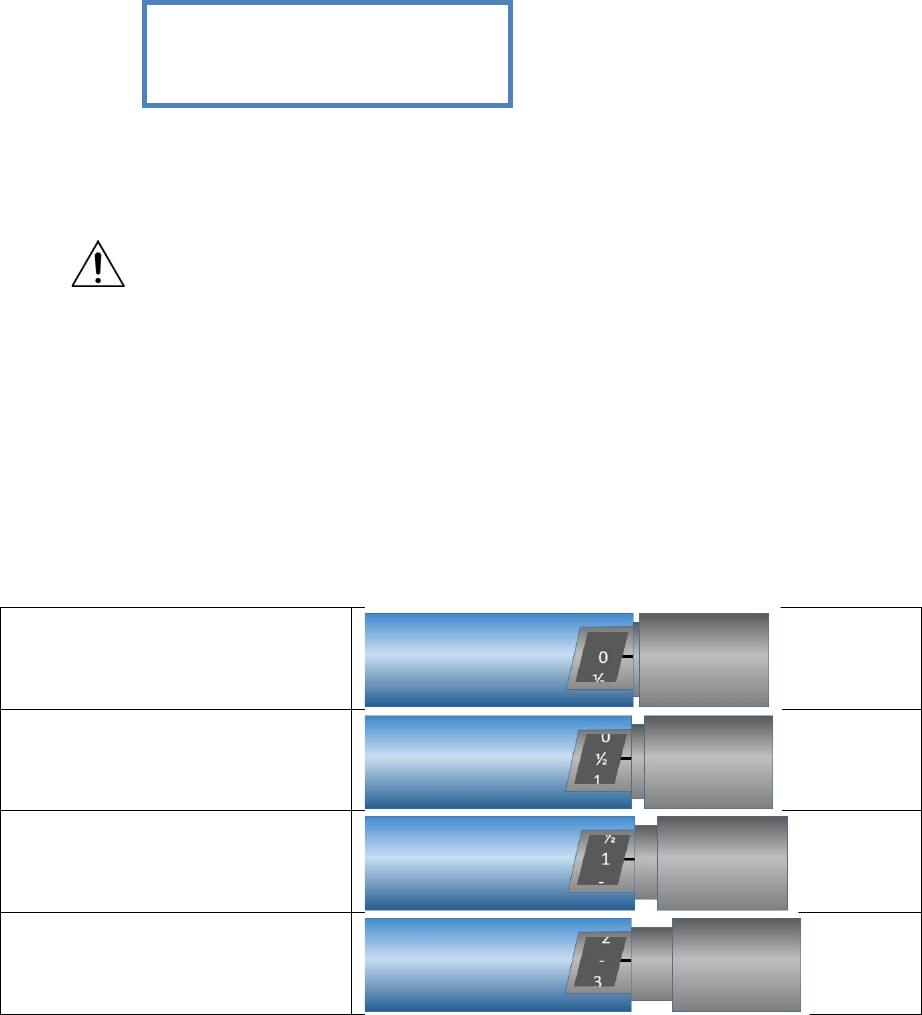
Page 7 of 13
• Check the insulin flow until a drop of insulin appears at the needle tip
6 Selecting Your Dose
6.1 Steps
1. Select your dose by turning the Dose Knob until the desired dose is lined up with the
Dose Indicator. Half units are shown as lines between the numbers.
If you select a wrong dose, simply change it by turning the dose button in either
direction. If you change your mind and do not want to inject a dose, you may adjust
the knob back to the 0 set point. No insulin will be dispensed until you press the
button.
6.2 Important Notes:
You cannot select a dose larger than 30 units. If you need more than 30 units, you must
divide your dose into two injections.
6.3 Frequently Asked Questions about Selecting Your Dose
1. How do I read the dose indicator?
The InPen can be adjusted in steps (increments) of 0.5 (½) units. Read the numbers shown in
the indicator window to see the current dose setting. If the indicator is between numbers,
this means that it is set at a ½ unit step between the numbers. For example, the line between
2 and 3 indicates 2.5 (2 ½) units. See Table 1 below for more examples
Table 1
Set to 0 units. The indicator line is
aligned with the “0” mark, which means
nothing will happen if the button is
pressed. Store the InPen this way.
Set to ½ unit. This is the smallest dose
setting possible.
Set to 1 unit. The indicator line is lined
up with the number “1”.
Set to 2.5 units. The indicator line is on
the mark between the “2” and “3”.
Image of a user adjusting knob.
Highlight the dose indicator window
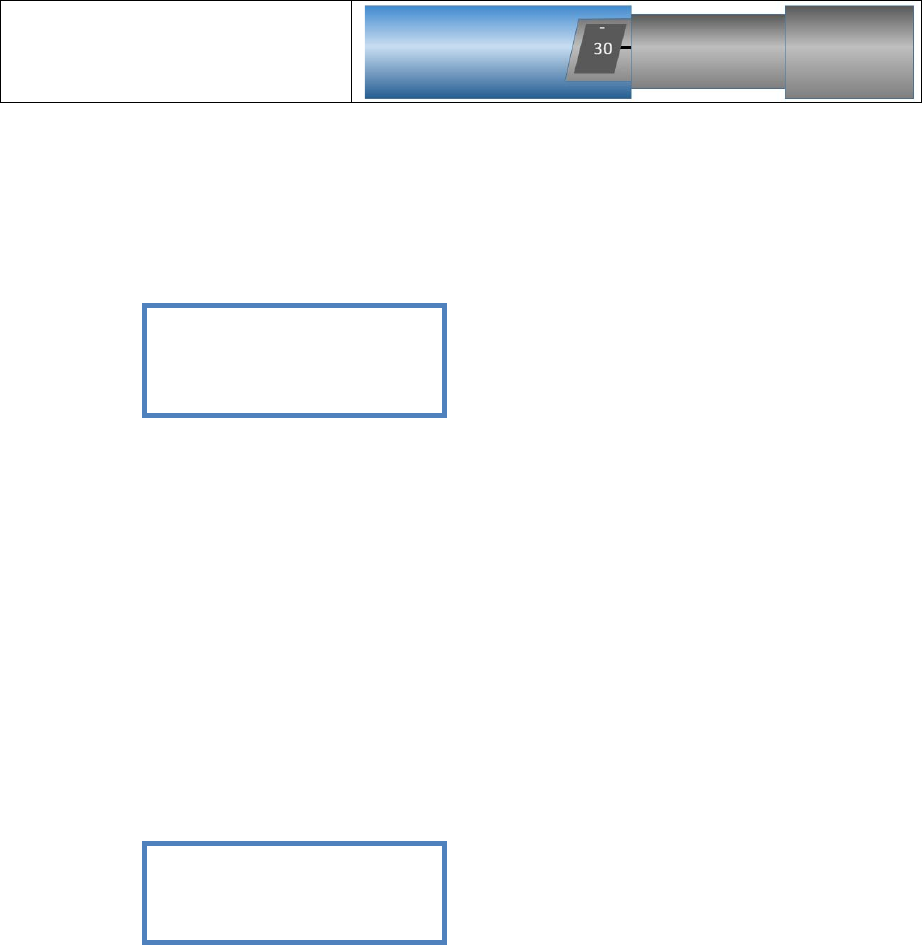
Page 8 of 13
Set to 30 units. This is the maximum
dose setting possible.
7 Injecting the Dose
7.1 Steps
1. Insert the needle into your skin as your healthcare provider has instructed you.
2. To inject your insulin, place your thumb on the Injection Button, then slowly and
firmly push the button until it stops moving.
3. Continue to hold the button for 5 seconds and then remove the Needle from your
skin. Check to make sure you see a 0 in the Dose Window to confirm you received the
complete dose.
Note: It is possible to set a dose larger than the amount of insulin left in the
Cartridge. At the end of an injection, the number in the Dose Window should be 0.
If it is not, this number is the amount of insulin you did NOT receive. Remember
this number, because you will need to install a new cartridge and inject this much
insulin to complete your full dose.
4. After you remove the needle from the skin a drop of insulin may appear at the needle
tip. This is normal and has no effect on the delivered dose.
Note: To prevent air from entering the Cartridge, do not store the InPen with a
Needle attached.
5. Place the cap back onto the Needle, and remove the capped Needle by twisting it off.
6. Put the used Needle in a sharps container or a hard plastic container with a secure lid.
Do not throw needles directly into your household trash.
7. Do not recycle the container of used needles. The full container must be disposed of
according to your state and local laws.
Note: For information on how to dispose of the container properly, ask your
healthcare provider about options available in your area or go to the FDA website
at: www.fda.gov/safesharpsdisposal
8. Replace the cap on your InPen.
Image of needle being
removed
Image of injection, showing
thumb pressing button and 5
second stopwatch icon

Page 9 of 13
7.2 Important Notes
• You must PUSH the Injection Button straight down for the dose to be delivered.
• You will NOT receive your insulin by turning the Dose Knob.
• Do not attempt to change the dose while injecting.
• Always remove the used needle after each injection and store the InPen without a needle
attached. This prevents contamination, infection, and leakage of insulin and will ensure
accurate dosing.
• Always put the InPen cap back on after every use.
• Caregivers should be most careful when handling used needles to avoid hurting
themselves.
7.3 Frequently Asked Questions about Injecting the Dose
1. Why does the InPen not deliver any insulin when I turn the dose button to inject?
Turning the dose button will not deliver insulin. You have to press the dose button to
inject.
2. Why is it difficult to push the Injection Button when I try to inject?
• Your Needle may be clogged. Try attaching a new Needle, and then prime the InPen.
• Pushing the Injection Button down quickly may make the Button harder to push.
Pushing the Button more slowly may make it easier.
• Using a larger diameter Needle will make it easier to push the Injection Button during
injection. Ask your healthcare provider which Needle is best for you.
If none of the above steps resolves the problem, your InPen may need to be replaced.
Your Injection Button may become harder to push if the inside of your InPen gets dirty
with insulin, food, drink or other materials. Following the HANDLING AND STORAGE
instructions below should prevent this.
3. Why doesn’t the Dose Knob go to zero when I inject my dose?
This can happen if the Insulin Cartridge does not have enough insulin left in it for your
entire dose, or if the needle has become clogged. To get the rest of your dose:
• The number in the Dose Window is the amount you did NOT receive. Remember this
number, because you still need to inject this much to complete your dose.
• Adjust the knob back to the “0” setting.
• Remove the Needle from the InPen.
• If the cartridge is empty, replace it with a new cartridge. If it is not empty, it is likely
the needle was clogged.
Image of pen with cap back
on

Page 10 of 13
• Install a new Needle.
• Prime the InPen until a stream of insulin is observed.
• Complete your dose by dialing the amount that you did NOT receive and inject only
this amount.
• If you are not sure whether you have received your full dose, you should check your
blood glucose level more frequently.
8 How Much Insulin is Left in Your InPen?
The cartridge scale shows an approximate number of units left in the Cartridge.
It is ok to set a dose greater than the amount of remaining insulin. The InPen will deliver as much
insulin as is left in the cartridge and then you can complete the dose with a new cartridge. Refer to
the INJECTING THE DOSE section above.
9 Replacing a Used Insulin Cartridge
Be sure the needle has been removed and disposed of properly.
Follow the instructions in PREPARING YOUR INSULIN INPEN section above. Dispose of the used
cartridge before installing a new one.
10 Handling and Storage of Your InPen
When an Insulin Cartridge is installed in your InPen, store your InPen at room temperature. Refer to
your insulin manufacturer or literature that came with your insulin for information from on how to
store the cartridges and how long to keep them.
Remove the Needle after every use. Do not store the InPen with the Needle attached.
Do not store the InPen in a refrigerator.
Keep your InPen in its case when possible. In the case you can also store:
• an extra Insulin cartridge
• extra disposable needles
Clean your InPen as needed only with a soft cloth moistened with water, being careful not to get
water inside. Never submerge the InPen or use any cleaning agents other than water. If you get
insulin on your InPen, clean it off right away.
10.1 Important Notes
Your InPen is designed to work accurately and safely, but you must still take good care of it.
• Only use your InPen as described in this manual.
• Handle it with care and do not drop it or knock it against hard surfaces.
• Do not try to wash, soak, or lubricate your InPen as this may damage it.
Image of insulin scale with an
empty cartridge
Image of insulin scale with a
full cartridge
Page 11 of 13
• Keep it away from direct sunlight, water, dust, and dirt.
• Do not expose your InPen (without cartridge) to temperatures below -25 °C (-13°F).
• Do not try to repair a broken InPen
• The battery lasts for one (1) year after activation and cannot be replaced.
When the battery runs out and the InPen can no longer communicate with the Application,
contact your supplier to purchase a new InPen.
Frequently asked Questions about Caring for your InPen
1. What should I do if my InPen has been dropped or knocked against a hard surface, or if I am not
sure that it is working properly?
• If you suspect that your InPen has been damaged or may not be working properly,
discontinue using it immediately, and contact your healthcare provider.
• If you choose to continue using your InPen, check that the Insulin cartridge is not
damaged (see the information provided with the Insulin cartridge) and install a new
needle.
• Some disposable needles are supplied with a cap that may be filled to verify the correct
volume of insulin is being dispensed. This may be used for added confirmation that the
InPen is functioning properly. Refer to the Patient Information provided with the
Needle for information on this feature.
11 Replacement
Your InPen has been designed to be used for up to 1 year after first use. Record the date your InPen
was first used here: ____/____/____. Contact your healthcare provider to get a prescription for a
new InPen when the year is complete.
12 Disposal
Your InPen contains a lithium battery and electronic parts, so you should not throw it out with your
household waste, but do so in a safe and environmentally correct way:
• Remove the needle and cartridge, and throw them away as your doctor or nurse has
instructed you.
• Throw your InPen away as specified by your local authorities.
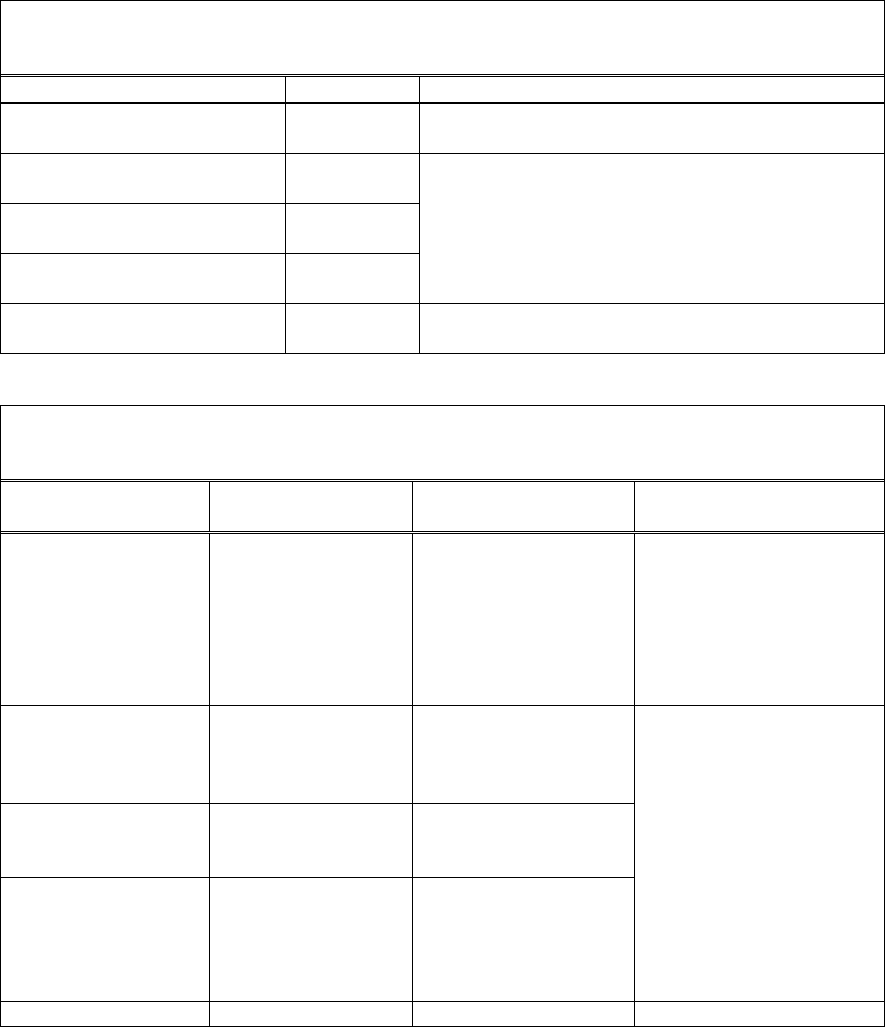
Page 12 of 13
13 SUPPLEMENTAL INFORMATION
13.1 Essential Performance
Essential performance of the following components of the InPen has been determined to be
safe operation and recovery from performance interruption with a restart and/or reset of the
unit.
13.2 Electromagnetic Compatibility Declarations
Electromagnetic Emissions
The InPen is intended for use in the professional healthcare and home healthcare environments. RF
Emissions Limits and Methods of Measurement per: FCC Part 15B; ETSI EN 301 489-3 V1.5.1 and ETSI EN
301 489-27 V1.1.1, CISPR 11 and IEC60601-1-2.
Emission Test
Class/Group
Electromagnetic Environment Guidelines
Radio frequency emissions
CISPR 11
Group 1 The system uses RF energy to communicate with an
optional application (Bluetooth Low Energy).
RF emissions
CISPR 11
Class A The system is suitable for use in the professional
healthcare and home healthcare environments.
Power Line Harmonic emissions
EN 61000-3-2
Class A
Conducted Emissions
EN 55022
Class B
Power Line Flicker
EN 61000-3-3
Criterion A The system is suitable for use in the professional
healthcare and home healthcare environments.
Electromagnetic Immunity
The InPen is intended for use in the professional healthcare and home healthcare environments.
Electromagnetic Immunity tests in accordance with requirements of ETSI EN 301 489-3 V1.5.1 and ETSI EN
301 489-27 V1.1.1 and IEC/EN 60601-1-2.
Immunity Test Test Level EN 60601
Compliance Level
Electromagnetic
Environment Guidance
Electrostatic discharge
(ESD)
EN 61000-4-2
±2, 4, 8 kV contact
±2, 4, 8, 15 kV air
±8 kV contact
±15 kV air
Class C
The relative humidity
should be at least 5%.
Electrostatic discharge may
result in temporary loss of
function, requiring the user
to restart or reset the
system.
Electrical fast
transient/burst
EN 61000-4-4
±2 kV for power
supply lines
±1 kV for
input/output lines
±2 kV for power supply
lines
(no input/output lines)
Class B
Mains power quality should
be that of the typical public
low voltage power supply.
The RCC contains a battery
that must be charged for
use without mains power.
Surge
EN 61000-4-5
±1 kV differential
mode
±2 kV common mode
±1 kV differential mode
±2 kV common mode
Class A
Voltage dips, short
interruptions and
variation on power
supply lines
EN 61000-4-11
<5% UT for 0.5 cycle
40% UT for 5 cycles
70% UT for 25 cycles
<5% UT for 0.5 cycle
40% UT for 5 cycles
70% UT for 25 cycles,
Criterion B & C
Magnetic Fields
30 A/m
3 A/m

Page 13 of 13
Radio Frequency
Common Mode
EN 61000-4-6
3 Vrms
150 kHz-80 MHz
3 Vrms
150 kHz-80 MHz
See the following table,
Recommended Separation
Distance between RF
Transmitters and the InPen.
Radiated RF
IEC 61000-4-3
28 V/m
80 MHz-2.5 GHz
3 V/m
80 MHz-2.5 GHz
Note: UT is the mains voltage prior to application of the test level.
Recommended Separation Distances Between RF Transmitters and the InPen
The InPen is intended for use in the professional healthcare and home healthcare environments. The
user of the device can help prevent electromagnetic interference by maintaining a minimum distance
between the transmitter (portable and mobile RF equipment, fixed transmitters for cordless/cellular
phones, AM/FM/TV broadcast) and any part of the system as recommended below.
Maximum output power
of transmitter [W]
Minimum Separation between transmitter and system [m]
150 kHz-80 MHz
𝑑=
3.5
28 √𝑃
80 MHz-800 MHz
𝑑=
3.5
28 √𝑃
800 MHz-2.5 GHz
𝑑=
7
28 √𝑃
0.01 0.0125 0.0125 0.025
0.1 0.0395 0.0395 0.079
1 0.125 0.125 0.25
10 0.395 0.395 0.79
100 1.25 1.25 2.5
1000 3.95 3.95 7.9
10000 12.5 12.5 25
Guidance: Electromagnetic propagation is affected by absorption and reflection from structures, objects,
and people. As such, these guidelines may not apply in all situations. If abnormal performance of the
system is observed, additional measures may be necessary, such as re-orienting or relocating the system.
Declaration of Conformity
Companion Medical declares that this product is in conformity with the essential requirements of
Directive 1995/5/EC on Radio and Telecommunications Terminal Equipment and Council Directive
93/42/EEC of 14 June 1993 concerning medical devices (M5).
For information contact:
Companion Medical, Inc.
13014 Texana St.
San Diego, CA 92129 USA
www.CompanionMedical.com
© 2015 Companion Medical, Inc.
LBL-00020-AA